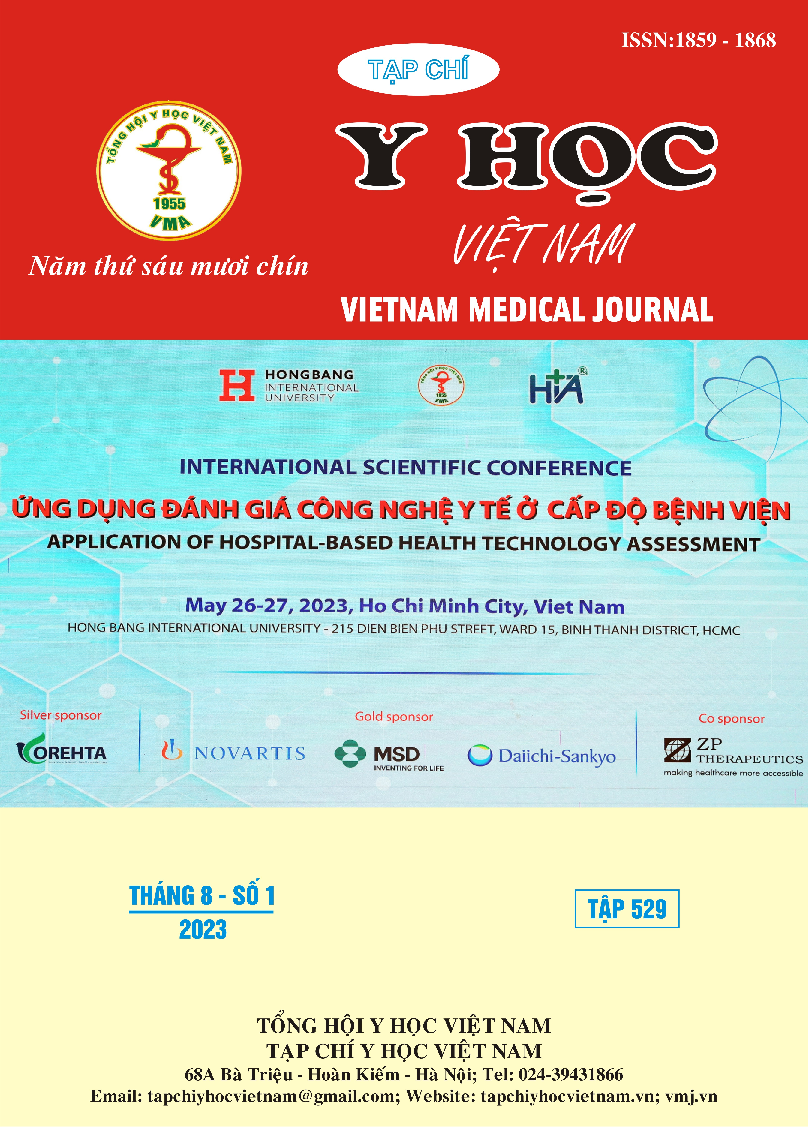RESEARCH ON HEMATOLOGICAL CHARACTERISTICS AND MUTATIONS OF β – THALASSEMIA IN FRESHMAN STUDENTS OF CAN THO UNIVERSITY OF MEDICINE AND PHARMACY
Main Article Content
Abstract
Background: β-Thalassaemia (β-Thal) disease caused by mutations in the β-globin gene causes hereditary hemolytic anemia, seriously affecting the quality of life of patients. Objective: To determine the genetic mutations causing β-Thal disease in students of Can Tho University of Medicine and Pharmacy in 2022. Materials and methods: A cross-sectional descriptive study on 70 freshmen studying at the University of Medicine and Pharmacy. A student at the University of Medicine and Pharmacy (CTUMP) was diagnosed with the β-Thal disease by hemoglobin electrophoresis technique. Results: There were two β-Thal diseases identified as HbAE (77.1%) and heterozygous β-Thal (22.9%). In the survey characteristics, ethnic characteristics, and abnormal types of MCV/MCH were related with statistical significance (p<0.05) with the rate of these two diseases. Regarding the pathogenic mutations, there were a total of 7 types of mutations concluded from the results of gene sequencing with a decreasing rate: Cd26 A>G (77.1%), Cd41/42 –TTCT (7). ,first%); Cd17 A>T (4.3%), Cd71/72 +A (4.3%), IVS1.1 G>T (2.9%), IVS2.654 C>T (2.9%), Cd95 +A (1.4%). Except for the place of residence (p<0.001), the remaining characteristics including sex, ethnicity, age group, course, and MCV/MCH abnormality type were all significantly related to the occurrence. show these mutations. Conclusion: 07 types of mutations identified in students of CTUMP are all common mutations in Vietnam.
Article Details
Keywords
β – thalassemia, student, Cd 26 A>G, CTUMP.
References
2. Phạm Thị Ngọc Nga (2018), Nghiên cứu sự di truyền các đột biến gây bệnh ở bệnh nhân Beta thalassemia vùng Đồng bằng sông Cửu Long bằng kỹ thuật sinh học phân tử, Luận án tiến sĩ, Trường Đại học Cần Thơ.
3. Nguyễn Hoàng Nam (2019), Nghiên cứu kiểu hình và kiểu gen ở bệnh nhi beta-thalassemia, Luận án Tiến sĩ y học, Trường Đại học Y Hà Nội.
4. Buakhao J and et al. (2017), Prevalence and characterization of thalassemia among migrant workers from Cambodia, Lao PDR and Myanmar in Thailand, Southeast Asian J Trop Med Public Health, 48 (4), pp 1 – 11.
5. Muncie, H. L., Jr, & Campbell, J. (2009), “Alpha and beta-thalassemia”, American family physician, 80(4), pp. 339 – 344.
6. World Health Organization (2011), Haemoglobin concentrations for the diagnosis of anemia and assessment of severity.
7. Zhu Y., Shen N., Wang X., Xiao, J., & Lu Y (2020), Alpha and beta-Thalassemia mutations in Hubei area of China, BMC medical genetics, 21(1), pp 2 – 5.


